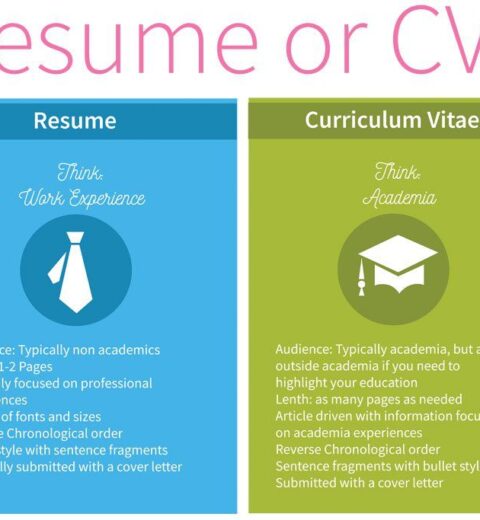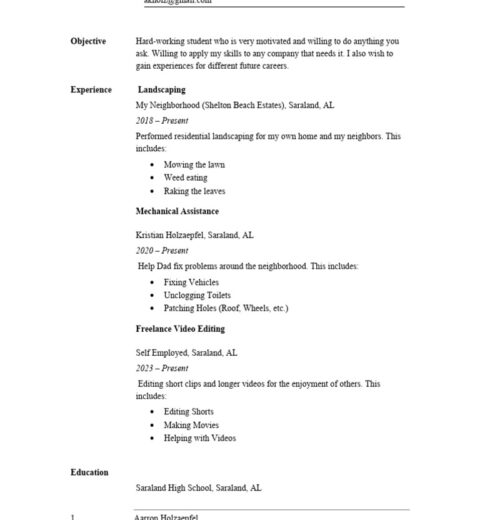In a competitive job market, crafting an effective resume can be a daunting task, not least because of the uncertainty surrounding the appropriate duration of work history to include. Many job seekers grapple with the perennial question: “How far back should I go on my resume?” This query transcends mere format; it is fundamentally about presenting oneself in the best light possible while adhering to industry norms and expectations. Addressing this question necessitates an exploration into several dimensions—including the nature of one’s career trajectory, the expectations specific to various fields, and the overarching principles of effective resume design.
Firstly, consider the conventional wisdom surrounding resume duration. Most career experts advocate for including work history dating back 10 to 15 years. This timeframe is generally regarded as the sweet spot. It encompasses ample experience while avoiding potential pitfalls associated with listing outdated positions. However, the specific timeframe can vary based on individual circumstances.
For those in industries characterized by rapid evolution—such as technology or digital marketing—such far-reaching historical depths may not be necessary. A prospective employer is likely more interested in your most recent experiences, particularly those within the last five to seven years, which can effectively demonstrate your adaptability and relevant skill set. Conversely, applicants in more traditional fields, such as academia or government, may find it beneficial to include roles from further back in their careers. In these sectors, prolonged periods of employment with a clear career progression can solidify credentials and lend credibility to one’s expertise.
Beyond considerations of industry norms, it’s crucial to maintain a focus on the relevance of the information presented. Each role listed on a resume must contribute something salient to your candidacy. Merely adding the name of a former employer and title without elaborating upon your contributions or achievements can dilute the potency of your resume. Take a discerning approach—ask yourself whether each position enhances the narrative you wish to convey.
In some instances, you might have an impressive history that spans beyond a decade. If this is the case, consider curating your work history. Highlight essential roles and eliminate those that do not substantially contribute to your current objectives. You may also consider limiting the details for earlier positions and expanding upon more recent responsibilities. This tactic not only allows you to comply with conventional time recommendations but also directs attention toward the most pertinent and impactful experiences.
Furthermore, there are specific scenarios where including older positions could enhance your resume. For instance, if you have taken a non-linear career path or have significant achievements early in your career, including these experiences can bolster your application and contextualize your professional journey. It’s also relevant to address any substantial gaps in employment, whether voluntary or involuntary. A well-structured narrative that explains these gaps can transform potential concerns into opportunities for discussion during interviews.
Another vital consideration is the format of your resume. A chronological format may be the most traditional and widely accepted layout, particularly for those with continuous career progression. However, for individuals with a diverse professional history or significant career shifts, a functional or hybrid format might be more visually and contextually beneficial. Such formats allow you to emphasize skills or achievements rather than adherence to a linear timeline, thus providing the flexibility to showcase your strengths without rigid constraints.
Moreover, prospective employers are increasingly inclined to evaluate candidates through the lens of transferable skills. Competencies such as leadership, problem-solving, and effective communication can be gleaned from various roles across a person’s career history. So, when contemplating how far back to go on your resume, consider positioning roles that helped develop these skills prominently, regardless of when they occurred. This approach can be particularly compelling for candidates switching fields or industries, as it clearly delineates the value they bring from diverse experiences.
As you craft your resume, remain mindful of the evolving trends in employment. The proliferation of applicant tracking systems (ATS) has altered how resumes are scrutinized. Many organizations now utilize software to initially vet applications, checking for key terms and relevant experience. Thus, tailoring your resume not just in terms of chronological scope but also in alignment with the specific job listing is integral. Are there particular skills the employer values? Ensure those are articulated effectively within the context of your pertinent experiences.
Finally, reiterate the necessity of staying concise. As much as it may be tempting to pull in extensive career history or list every responsibility you’ve ever held, clarity is paramount. A succinct, focused resume that tells a story will inevitably leave a stronger impression than a lengthy document that burdens the reader with superfluous details. Aim for a one-page resume if you’re early in your career, and up to two if your experiences are extensive yet relevant.
In conclusion, determining how far back to go on a resume is intrinsically linked to your unique career trajectory, industry norms, and the nature of the roles for which you are applying. While 10 to 15 years is generally advised, relevance and clarity should always take precedence. Ultimately, a well-curated resume serves as a bridge—melding historical experiences with contemporary aspirations, setting the stage for potential employers to see you in a new light.




